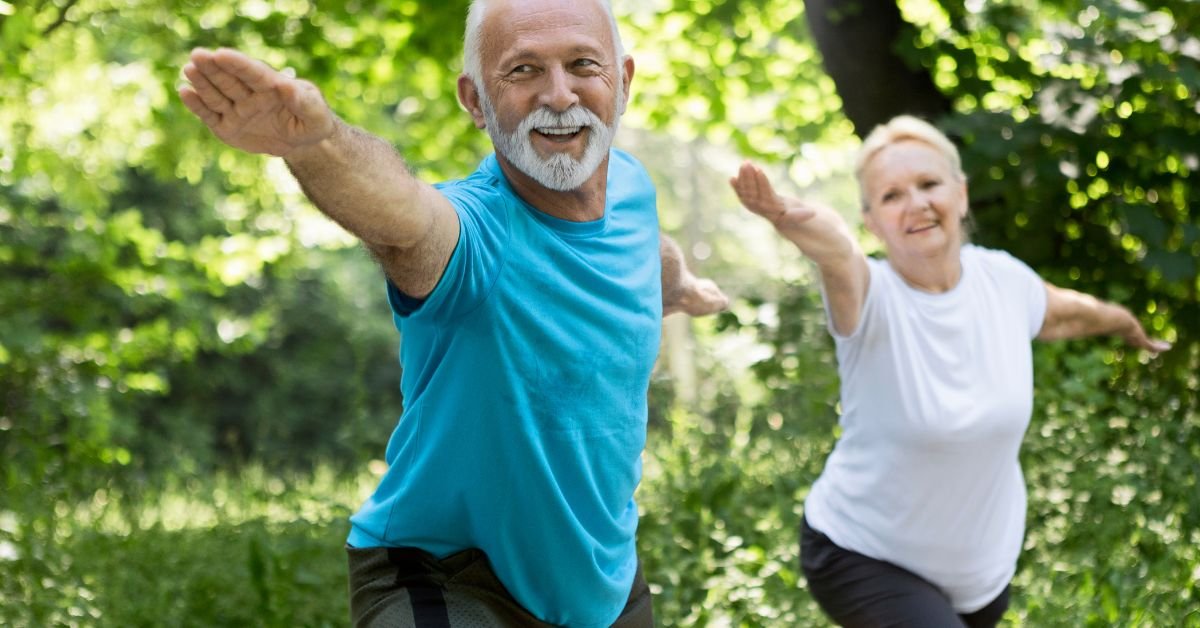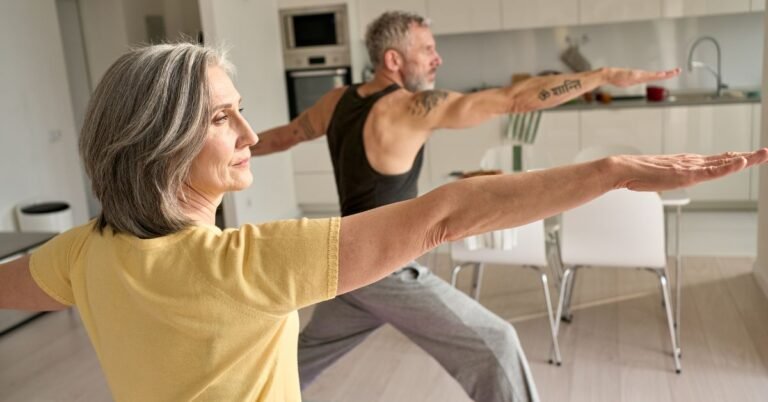Balance is a vital skill for all of us. It’s one that becomes more important as we get older, since the consequences of poor balance, including falls, injuries and fractures have a much bigger impact on our health and life. We can no longer bounce off the floor like we could when we were children.
One third of all adults over 65, and half of all adults over 80, experience falls each year.1 These falls can result in injuries, fractures, pain, distress, loss of mobility, loss of independence and even death. The one year mortality rate after a hip fracture is between 18-33% (that means 18-33% of those who suffer a hip fracture unfortunately die within one year).
Balance itself has been shown in some studies to predict long term health outcomes and even survival. A recent study found that being able to single leg stand on one leg for 10 seconds predicts survival in middle and older age adults.2 Have a go at this one yourself!
What we’ll cover:
How can older adults improve their balance?
When we say balance is a skill, we mean it. It’s our ability to keep our centre of gravity within our base of support, in a variety of dynamic and complex situations that is daily life. A skill, like any skill, needs to be practised regularly.
Balance is a complex skill that requires 3 main inputs:
- Visual information from our eyes to tell us what’s going on around us.
- Proprioception and somatosensory information from receptors in our joints, skin and tissues to tell us about how we are interacting with our environment.
- The vestibular system in our inner ear which tells us where our head is in space.
Our brain has to process all of this information, and then send messages to our muscles to tell us to do something. Unfortunately all of these systems slow down as we get older due to a variety of reasons. Part of this is due to natural ageing processes. But it’s also because as we get older, we tend to stop exposing ourselves to situations that challenge these systems as much.
Therefore balance training and balance exercises should involve challenging all of these systems on a regular basis. Public health guidelines recommend older adults perform balance exercises at least twice per week.3
Due to the importance of balance for older adults, we recommend doing balance exercises every day – it only needs to be for a few minutes!
Best balance exercises for seniors:
Static balance exercises
Static balance exercises are ones where you are trying to stay very still in a certain position. You should start these at a level that is manageable but also challenging. You can start near a wall or back of a chair to reach your hands towards if needed.
It’s best to start with ones which include a wider base of support (i.e a wider distance between all your points of contact with the body on the floor), then progress to less base of support.
Static balance exercise progressions
Aim for 20-30 seconds on each, progress once you can do the previous step easily:
- Put your standing feet completely together
- Put one foot slightly in front of the other
- Put one foot directly in front of the other foot (like a tightrope)
- Stand on one leg (this is called a single leg stand)
Once you are reaching a single leg stand for 30 seconds easily, we can progress this by adding challenge to the visual and vestibular system:
- Single leg stand with the head slowly turning side to side
- Single leg stand with the head slowly looking up and down
- Single leg stand with the eyes shut
Or, you could add in a challenge moving the upper body:
- Single leg stand reaching the arm forwards
- Single leg stand passing a ball above the head
- Single leg stand passively a small weight around the body
Or you could add a cognitive challenge:
- Single leg stand singing a song
- Single leg leg stand counting backwards from 100
Dynamic balance exercises
It’s also important to work on what is known as dynamic balance. This helps us to stay upright whilst we are actually moving around.
Dynamic balance exercise ideas:
- Walking forwards on a tightrope
- Walking backwards on a tightrope
- Stepping forwards into a lunge
- Stepping backwards into a lunge
- Stepping up a step
- Stepping backwards off a step
Dynamic balance exercise progressions
All of these can be challenged further by adding the visual or vestibular challenges.
For example:
- Walking forwards on a tightrope whilst turning the head side to side
- Stepping backwards into a lunge whilst counting backwards from 100
There are so many ways these exercises can be made more challenging and fun. You can be really creative with balance exercises! It’s vital we do keep them creative and challenging in order to keep stimulating and challenging our balance system.
There are also some great forms of exercise that help us challenge our balance systems regularly, including strength training, yoga and pilates, thai chi, off road/trail walking and dancing.
We recommend picking 2-3 exercises to start with, and performing them daily for a few minutes. You will quickly find these get a bit easier and you are ready to progress!
References
- Falls: Applying all our health (no date) GOV.UK. Available at: https://www.gov.uk/government/publications/falls-applying-all-our-health/falls-applying-all-our-health (Accessed: April 12, 2023).
- Araújo, C.G. (2022) Successful 10-second one-legged stance predicts survival in middle-aged and older individuals, BJSM blog – social media’s leading SEM voice. Available at: https://blogs.bmj.com/bjsm/2022/07/08/successful-10-second-one-legged-stance-predicts-survival-in-middle-aged-and-older-individuals/ (Accessed: April 12, 2023).
- Department of Health and Social Care (2019) Physical activity guidelines: Adults and older adults, GOV.UK. GOV.UK. Available at: https://www.gov.uk/government/publications/physical-activity-guidelines-adults-and-older-adults (Accessed: April 12, 2023).




